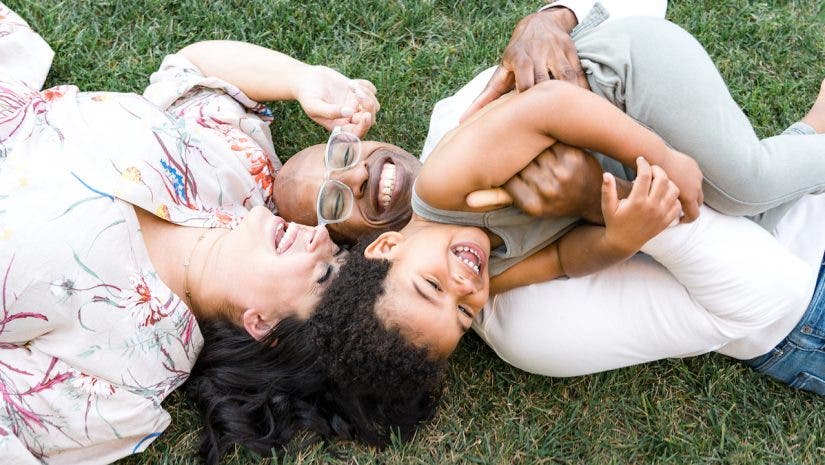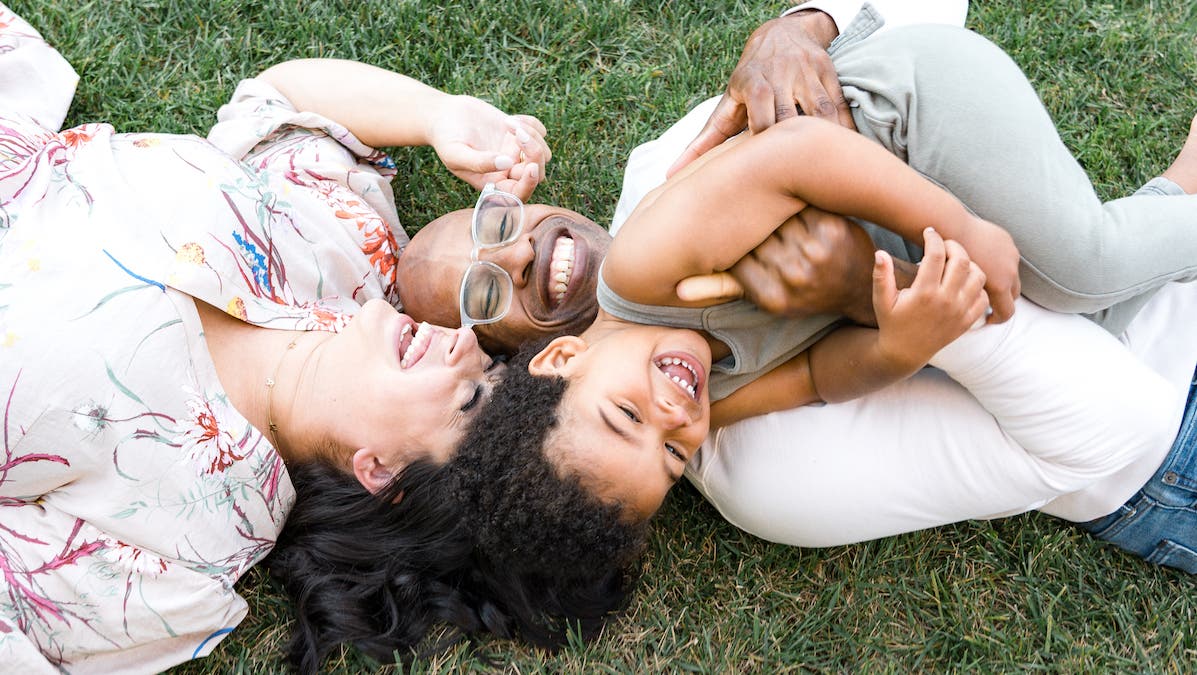I love creating memorable photos of families. If you’re working with family portrait photography or video, getting your subjects in motion will bring beautiful results. You may first think of the technical details of freezing motion or capturing blur, but I have a different approach when it comes to movement. I’m all about the energy of the people I’m photographing. I want my families to get close to each other, have fun, and look great.
Directing people to move is both an art and technique that takes some practice. Saying “yes and…” is a rule taken from improv comedy, and it works so well with families — set them up, and then add to what they give back to you. Play games, have fun, and keep the energy moving. Here are some other tips to work to capture movement in your family portrait photography.
Your Camera
What camera settings are best to capture people in motion? The short answer is, it can be slower than you think. A shutter speed of just 1/60 will stop motion. A very slight blur or movement can be flattering to skin. I start at 1/100 to eliminate any camera shake and adjust from there. Go with a faster shutter to freeze movement. Sharp images aren’t the only ones to love! I may use a slower shutter speed for blur throughout, which heightens emotion and softens the feeling of an image.
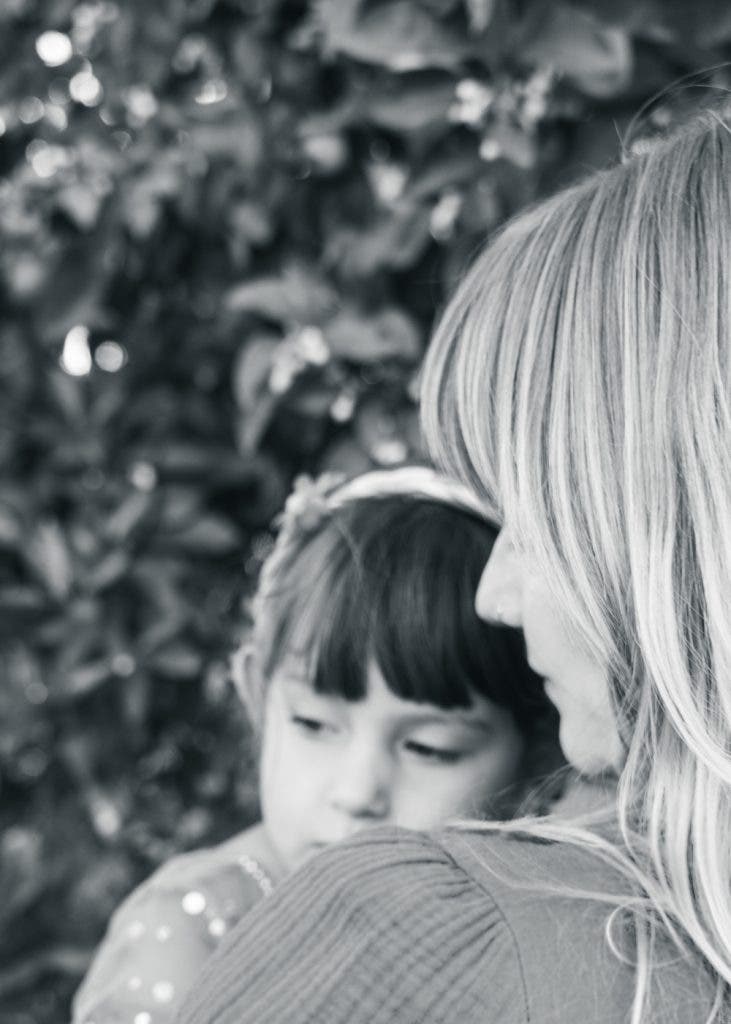
A fixed focal length lens works just great for moving subjects. First think about traveling in, out, and around your scene — going high and low and varying your shot that way. If you have a zoom lens, avoid constantly changing your focal length while you stand in the same place. It can cause decision fatigue when things move fast.
Since I’m a digital photographer and videographer, I keep any beep on my camera silent. My Sony mirrorless has a quiet shutter, which helps to keep things relaxed and moving. You may have the option to set your shutter to silent. This can be helpful as well. The silent shutter setting may cause distortion, as light hits the sensor at different times. This is something to test out with your camera before you work with clients.
Set Your Scene
To successfully capture motion, set up your scene first. Families can’t give constant energy, they will ebb and flow. Save some of that precious energy by giving the kids a break while you prep. Look at your scene, and set your camera for the lighting and the mood.
Start with mom. Set her up to flatter her first, and choose how you set and cue your family. What’s your frame and what’s your background? Decide on the image you’re creating before the movement starts. What looks amazing might feel weird, so keep encouraging as you go. If it’s all too much, give them a break and tell them that you’ll be way over here and get some distance.
In-between moments can yield beautiful results. Be ready when they walk from one scene to another. If a child is cranky, cries, or isn’t having it, go with it. If you reassure the parents to do whatever they need, observe, and continue to shoot, you’ll find magical moments of connection.
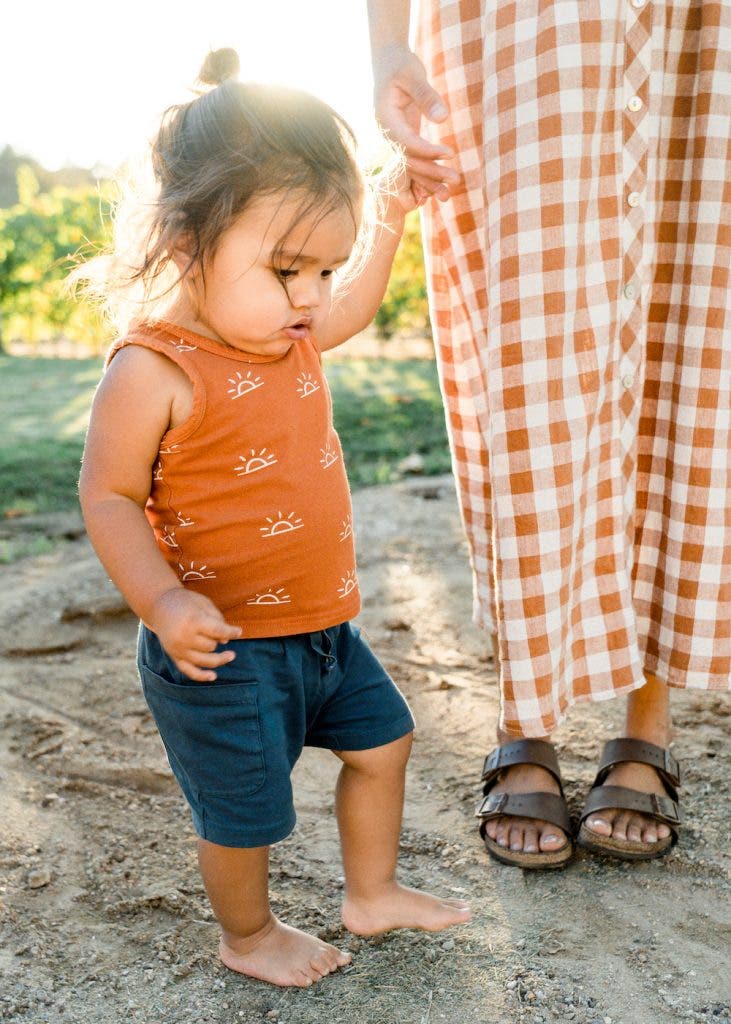
Wait for It
Take on the challenge of energizing the image more than the goal of freezing motion. If someone holds a pose too long, the image will go static. Any scene you set up will fall apart after posing. Make sure people feel relaxed, laugh, and connect. That’s where the magic is. Make small adjustments to flatter them. Go ahead and take the “everyone smiling at the camera” image. Then if the scene feels flat to you, it probably is — you can encourage them with games and ways to play.
I’m a digital photographer, so I often capture many frames of movement. Even though I shoot more than I really need, I’m looking for the height of the motion. That’s the moment when a smile is widest, the second before a child in the air comes down, or when someone’s weight has just shifted. Something that’s less important — a child’s hand moving — might blur out, but the balance of the image will be sharp.
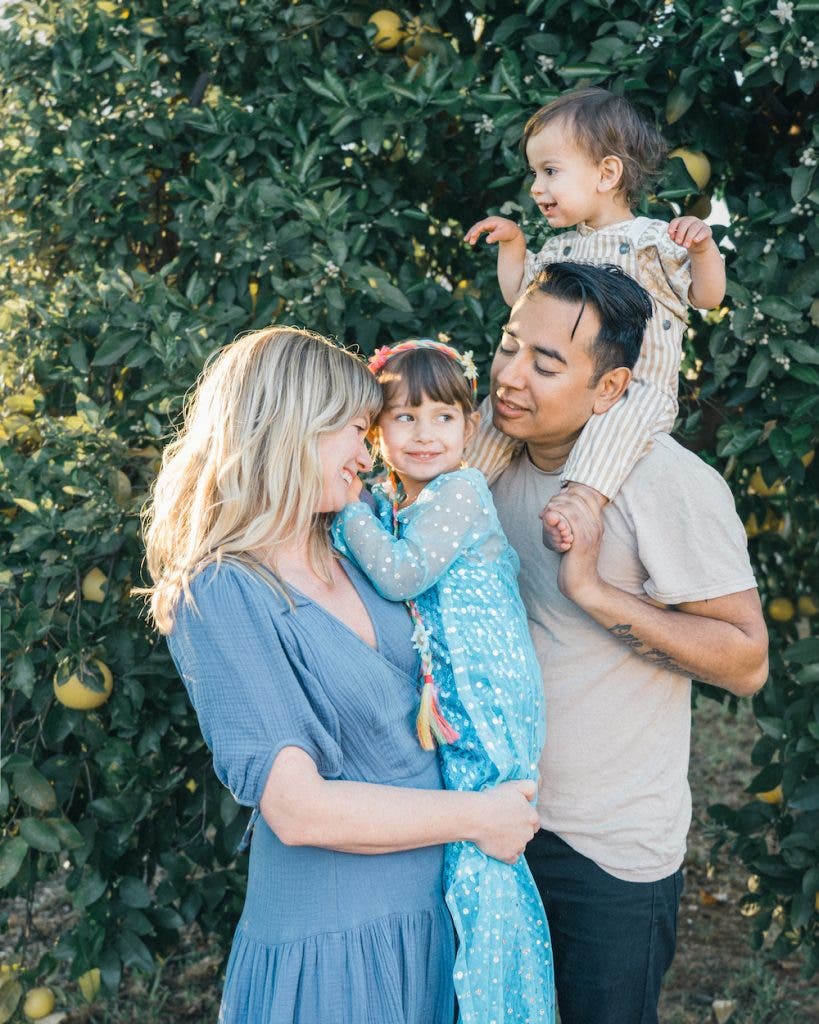
Start Small
You may assume families will naturally be close and cozy. Although, it can be awkward for families to snuggle in front of your camera. If people are stiff, the portrait will feel that way. It can be a challenge to capture big jumps or the whole family running together. Set yourself up for success and start small. To help parents stay close with their kids, I offer small, specific movements — take a breath, smell your kid’s hair, sway from side to side, shake out your hands. Encouraging a mama to reach with her chin is a great way to flatter her, and gives her some tension of movement. The subtlety of even just a breath catches the idea of love and closeness beautifully.
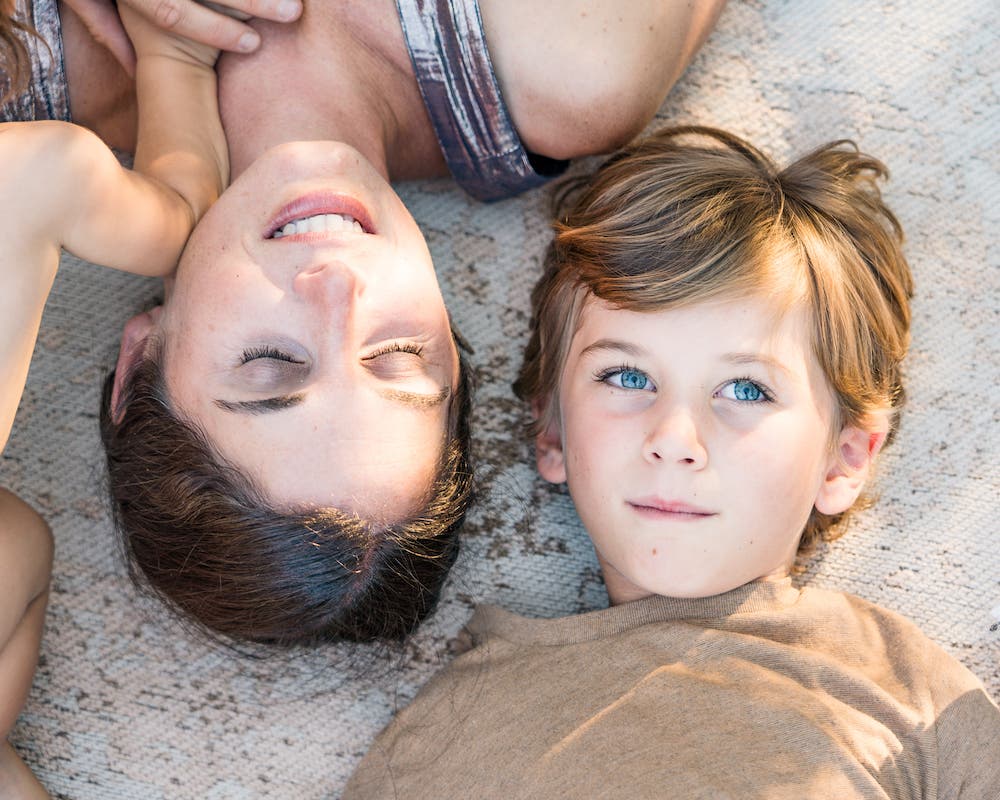
Slow it Down
Find ways to slow the movement to give yourself time to capture emotion and a series of images as they move. Tell people to run slowly. Offer them a place to look and what to do with their hands. A twirling mama can be so beautiful. Tell her to pause when she reaches you, then continue. That will give you blur and also a moment to compose your image. Move your camera in the same direction to blur the background.
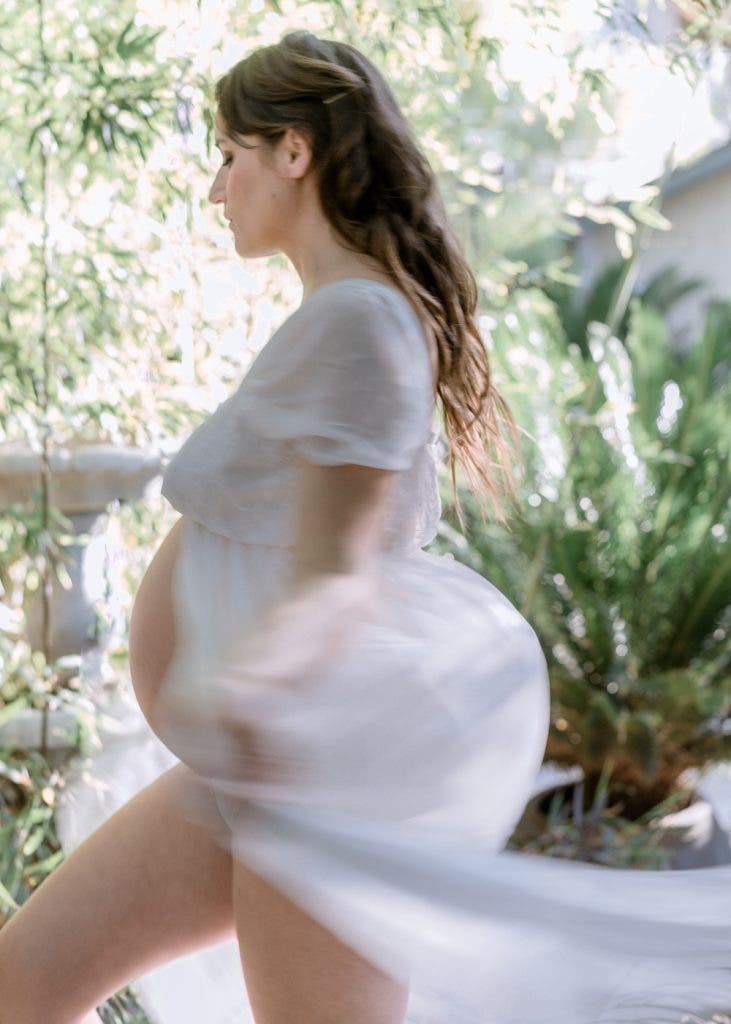
Experiment
Try something new at every shoot. Go with what you know you can do, but plan one thing to try and see how it turns out. When you know you have the images they want for the holiday card, just go for it. Bring a silk scarf to throw, and see what happens.

Offer Cues
“When I say go” or “when I count to three” is the way to start in any direction. If someone starts before you’re ready, just make it a game — say “I love that so much. Do it again and wait till I say go.” If you miss the moment, or want to give them an adjustment, you can say, “That’s so amazing, do that one more time.” The balance here is encouraging them to move, and making sure you are framed up and ready when they start. A wonderful aspect of portrait photography is you can give yourself as many takes as you need to get it. Families are more than happy to do something again, especially if it’s playful.
Make Them Laugh
Authentic joy and laughter translates on camera, and kids love to laugh! Do encourage laughter. Before you click, blurt the silliest word you can think of — kid-friendly potty humor works great. Tell them — “whatever you do, don’t laugh!” Have a laughing contest. The laughs start out awkwardly, but wait and it should dissolve into genuine fun.
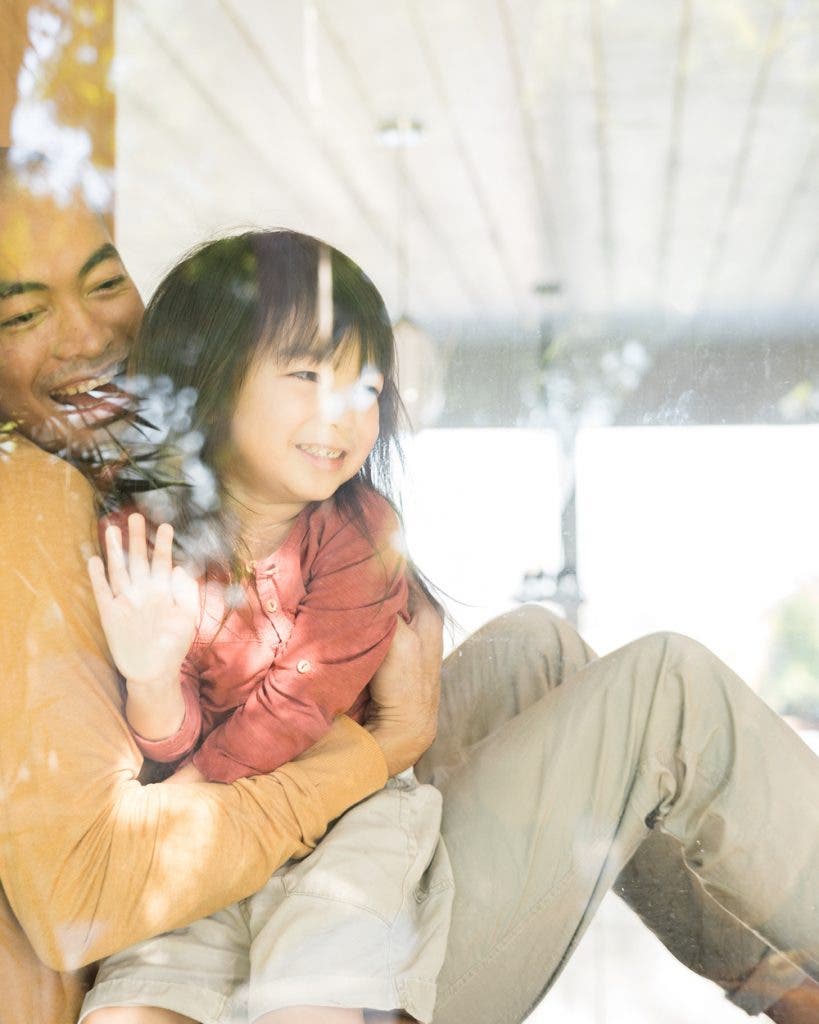
Posing and Games
Setting up and playing can yield amazing results. When you are working with a family, you can pose them comfortably and then incorporate movement. Start first by putting mom in a comfortable resting pose. Make sure her head is the closest part of her to your camera and she is flattered. Fix her hair or help her smooth out her dress. You can layer in dad and older kids after that. Frame your shot before you give the kids any direction. For small kids, recruit them to be a helper and give them the chance to jump in and hug mom or wrestle dad. Did you pose them? Yes, but you gave them something to do.
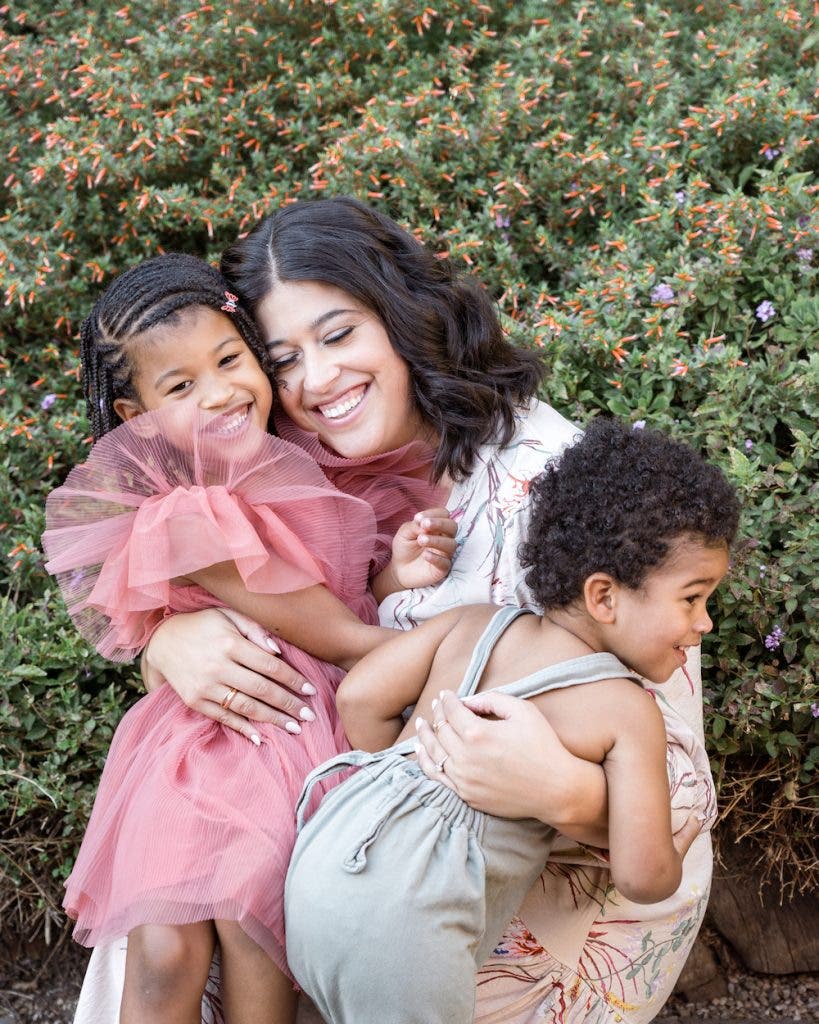
Working with movement in your family portrait photography takes practice and some experimentation, but it’s a great way to create beautiful images.
